
Every once in awhile, we come across some amazing discovery of an amber fossil that gives us a little glimpse of what kind of animals inhabited the Earth millions of years ago. Something similar happened in March 2020, when the skull of a bird-like creature that lived 99 million years ago was found in an amber fossil from Myanmar. Scientists have said that it is the smallest prehistoric dinosaur ever found. The tiny creature is closely related to the feathered dinosaurs Archaeopteryx and Jeholornis who are distant cousins of modern birds.
This is certainly a remarkable discovery, and it will give us more clues about the kind of world Earth was in that period. The importance of amber here cannot be stressed enough. The incredible substance is basically the fossilized remains of plant-produced resin and becomes solid upon fossilization. This causes it to trap small creatures and organisms that originally get stuck in the substance.
More than 1,000 extinct insect species alone have been cataloged because of amber. Here, we are going to look at some of the most recent and important ancient discoveries that have been preserved in amber.
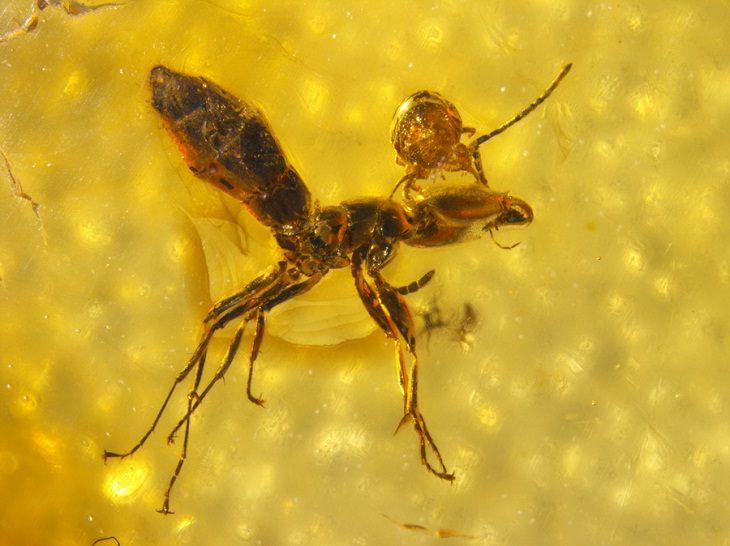
Image credit: Jason Dunlop/Museum für Naturkunde, Berlin
About 44 to 49 million years ago, this ancient ant was locked with a parasite in tree resin in the Baltic region. The fossil was found in late 2014 and scientists confirmed that this was only the second known example of a fossilized mite attached to its host.
The ancient mite, which was 0.7-millimeter-long (0.027 inches), is clearly attached to the ant's head. The amber mite looks quite similar to modern mites and experts have assumed that it had a similar way of life. However, since they are embedded in amber, researchers haven’t been able to tell whether the mite was feeding on the ant’s body fluids. It might also have been possible that the mite was just hitching a ride - a behavior also seen in modern parasitic mites. “People who work on this group think that the mites suck the body fluids of the ants from time to time,” says Jason Dunlop, an arachnologist at the Leibniz Institute for Evolution and Biodiversity Science in Berlin. “The ant also carries the mite around, so that when baby mites hatch they can also crawl onto ants and be transported into the ant nest.”
Whatever may have been the case, it proves that mites have been living with ants for more than 50 million years.
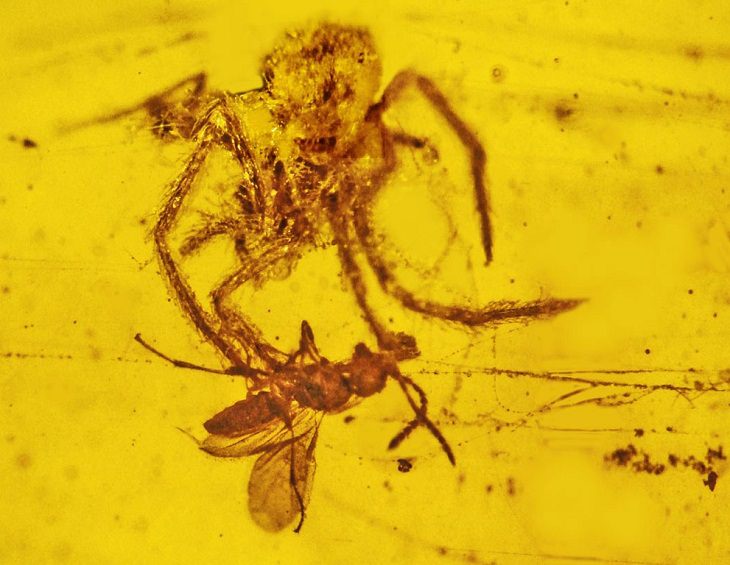
Image credit - Wikimedia Commons
In 2012, researchers discovered a rare scene of a spider attacking a wasp from millions of years ago, trapped in amber. Dating back to the Early Cretaceous, between 97 million and 110 million years ago, the amber, which was excavated in a Burmese mine, contains 15 intact strands of spider silk and is the first captured evidence of such an attack between the two species.
"This juvenile spider was going to make a meal out of a tiny parasitic wasp, but never quite got to it," George Poinar, Jr., a zoology professor at Oregon State University, said in a statement.
Scientists said that the wasp was a male and got himself trapped in the spider’s web. The petrified wasp was looking on at the spider, waiting for the attack to come, when the resin of the tree they were both in flowed over and captured them. While there are a few examples of amber-trapped insects caught in webs, there is no previous fossil record of a spider attacking its caught prey. According to the scientific team, the wasp was a member of the parasitic genus, Cascoscelio incassus, that is still in existence today, while the spider belonged to a now-extinct species called Geratonephila burmanica.
Interestingly, the chunk of amber also has the body of another male spider in the same web. This will provide information on the social behavior in spiders from millions of years ago.
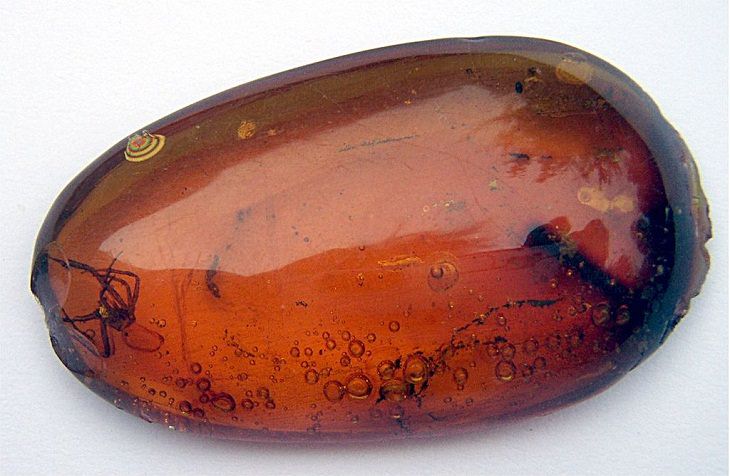
Image credit - Wikimedia Commons
The world's oldest known spider web was found on a beach in Sussex, England, in 2009, entombed in amber. The amber contained remnants of spider silk which date back to roughly 140 million years ago.
The web was closely examined by slicing the amber into thin sections and putting it under high-powered microscopes. It was then found that the ancient silk threads share a number of features common to modern spider webs. That also includes droplets of sticky glue that are used to hold the web together and capture prey.
Oxford paleobiologist Martin Brasier says that the gooey droplets suggest that, during the early Cretaceous period, a huge growth in the number of flying insects was seen. To adapt to this, that spiders had started spinning webs that were better adapted for catching flying insects.
One must remember, though, that while this is the oldest preserved spider web, there have been other dinosaur-era spider webs that have been found over the years. A 110-million-year-old web was discovered in Spain in 2006 and a 132-million-year-old one was found in Lebanon in 2003.
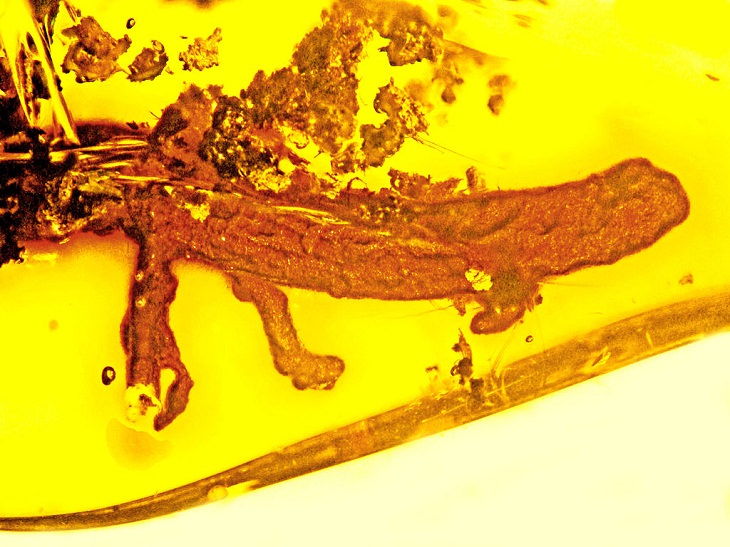
Image credit - Wikimedia Commons
Today, there are no salamanders on the Caribbean islands. However, a block of amber from more than 20 million years ago was collected from the region in 2015 containing a never-before-seen and now extinct species of salamander. The species, named Palaeoplethodon hispaniolae, showed that salamanders once lived on an island in the Caribbean Sea.
The specimen was less than three-quarters of an inch (19.05 mm) long and was possibly just a hatchling. From the amber, it was found that its left front leg was missing – a hungry predator must have ripped it off while trying to attack it. Based on visible physical features, like large webbed front and back feet, scientists believe that it is a new genus.
"There are very few salamander fossils of any type, and no one has ever found a salamander preserved in amber," says George Poinar, Jr., a biologist at Oregon State University who specializes in amber. Poinar further states that this salamander genus might not have been good climbers and lived in small trees or tropical flowering plants.
It is still unclear why these salamanders went extinct from the Caribbean islands, but findings like these will help researchers reconstruct biological and geological aspects of ancient ecosystems.
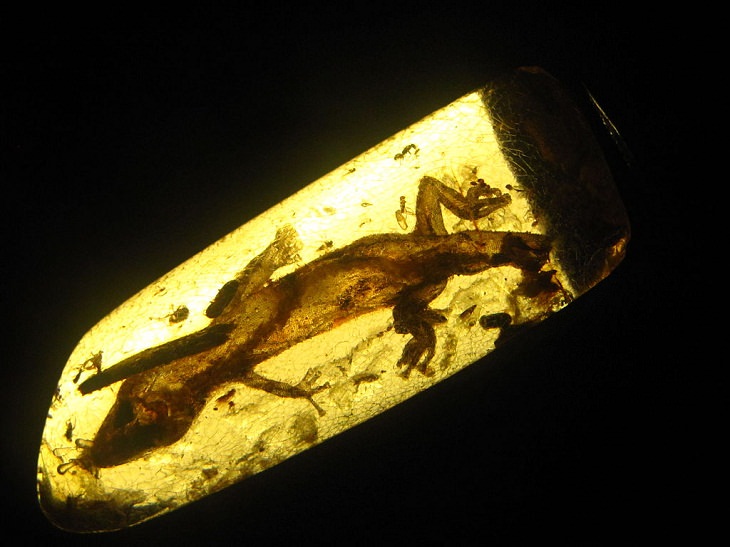
Image credit - Wikimedia Commons
About 99 million years ago, 12 unwary lizards fell into sticky tree resin in the forests of Myanmar. Unfortunately, they couldn’t free themselves. Their fossilized remains were found in 2016 and are believed to have been from the Mid-Cretaceous Period.
"The fossilized amber provides a view into a lost world, revealing that the tropics of the Mid-Cretaceous contained a diverse lizard fauna," Dr. Edward Stanley of the Florida Museum of Natural History was quoted saying.
Micro CT-scans of the tiny lizards revealed that these were some of the first geckos and chameleons to have ever existed. Thankfully, the amber is quite well-preserved with a superb amount of detail like toe pads, teeth, claws and even the scales of the reptiles quite visible. In fact, scientists can pretty much see what the animals looked like when they were alive.
Interestingly, while some of the specimens are representatives of modern groups of geckos, others have no modern equivalent and are believed to have become extinct naturally. Analysis of the gecko has shown that it had the sticky pads for climbing and gripping, much like its modern-day counterparts. Further studies will be conducted to see if they can help solve the gaps in the family tree between ancient reptiles and their modern relatives.
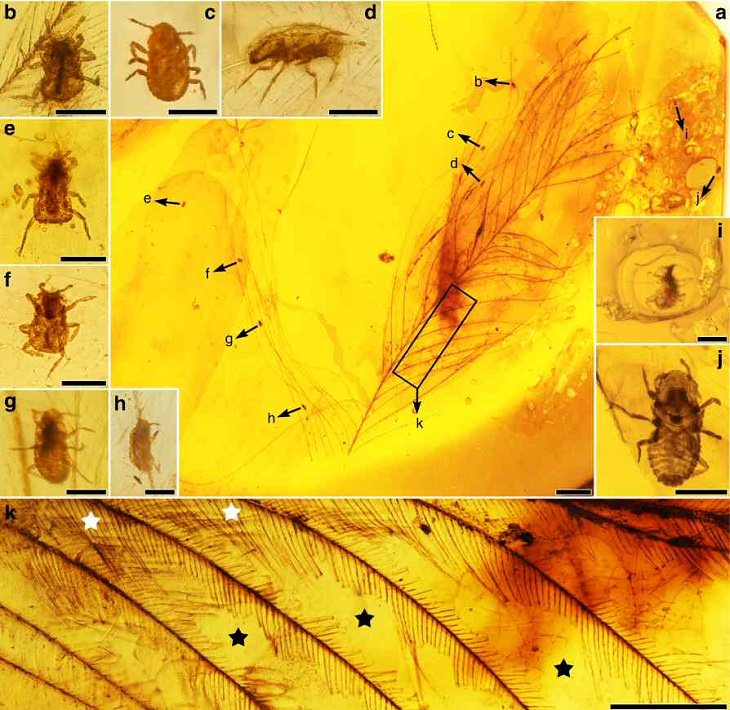
Image credit - Wikimedia Commons
It is highly possible that insects feasted on feathered dinosaurs, including early birds. A newly discovered ancient insect species, named Mesophthirus engeli, was found in 2019 trapped in two pieces of 99-million-year-old Burmese amber along with dinosaur feathers.
A total of 10 tiny insects were found in these fossils, just 0.2 millimeters (0.007 inches) long, and belonging to the mid-Cretaceous period. “Having an actual fossil — and not only this old, but feeding on feathers? That’s spectacular,” says Julie Allen, an evolutionary biologist at the University of Nevada in Reno. These tiny creatures are unlikely to fossilize and even harder to spot. Thus, this discovery is a significant step.
“Mesophthirus engeli shares many features of ectoparasitic function, i.e., wingless and dorsoventrally compressed body, reduced eyes, short antennae, robust and short legs unsuitable for quick movement or jump, pretarsus very small with one single claw, etc., which suggest that the insect had an ectoparasitic lifestyle,” said Capital Normal University paleontologists Taiping Gao and Dong Ren and their colleagues from China, the United States, and the United Kingdom.
While these ancient insects look weird, they do have distinct lice-like features. They have no wings, have tiny eyes along with short antennae and short legs.
What’s even more important about the discovery of these fossils is that they were found preserved with partially damaged dinosaur feathers. Furthermore, the feathers in the two amber specimens are quite different from one another and are likely to have been from different dinosaurs. Paleontologists carefully examined the well-preserved downy feathers and noticed some damage, as if something had been chewing on them. This indicates that feathered dinosaurs also had to deal with parasites and possibly had ways to get rid of them as well.